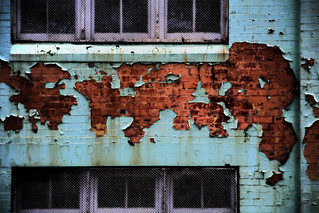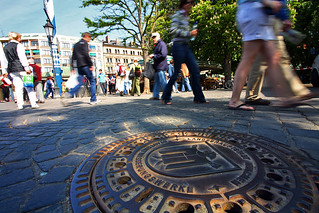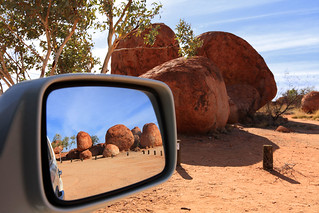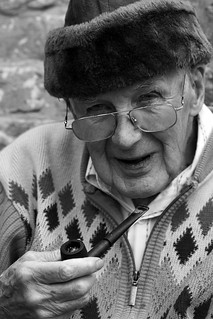

| Archive Blog Cast Forum RSS Books! Poll Results About Search Fan Art Podcast More Stuff Random |
|
Classic comic reruns every day
|
1 {photo of a guy preparing to take a photo of a couple standing on a small jetty}
1 Caption: Photo Op
|
First (1) | Previous (3239) | Next (3241) || Latest Rerun (2858) |
Latest New (5380) First 5 | Previous 5 | Next 5 | Latest 5 Annotations theme: First | Previous | Next | Latest || First 5 | Previous 5 | Next 5 | Latest 5 This strip's permanent URL: http://www.irregularwebcomic.net/3240.html
Annotations off: turn on
Annotations on: turn off
|
 An a-peel-ing subject. |
Those were the days of glass plates and of film, both technologies now so dated that to younger generations they seem similarly ancient. The game changed in the late 1990s with the introduction of consumer digital cameras. Freed from the bonds of chemistry—no longer requiring the purchase of rolls of film or the dropping off of said film at a pharmacy to be sent away for processing, only to be returned a week later, which would be the first time you would actually see the photos you'd taken—it suddenly became possible to take thousands of photos and to see the results instantly.
This liberated the photographic experience for many people. No longer did you take a couple of rolls of 24 shots on a vacation; now you took 500 photos. You no longer had to pick your moment in which to spend your precious resource. If you considered taking a shot before, wondering if it would be worth the film, now you could just take it and not worry.
Some people decry the lack of restraint and deliberation, arguing that photography used to be a pinpoint skill, and has been turned into a scattergun that takes no discipline to use. I choose to see it the other way. Using film, there was no way in the world I would have taken a photo of paint peeling off a wall. Now, there's nothing to stop me trying it, to see if I can create an image I like. Creativity unleashed!
 One of my favourite photos. I never would have taken this on film. |
Nearly everyone has a camera on them a lot of the time these days. And the question comes to mind (or to my mind, at least): what can we do with all these cheap, easy-to-use cameras that is more creative, interesting, artistic? So, here's a list of cool things to do with a camera. Some of them also make use of image processing software after the photos are taken. Some of them you may have tried already, or hold no appeal to you, but hopefully there are one or two ideas in here that make you think and inspire you to try something you never would have tried otherwise. And without further ado:
Black and white. No, seriously. It's easy to convert a digital photo to black and white, but how many ever do? Better yet, if your camera has a setting that saves the photo as black and white without saving a colour version, try that for a bit. You'll find you need to compose your photos differently, looking for contrasts in light intensity, rather than colour, if you want to make an interesting photo. It's a good training exercise in seeing things differently to how you normally see them, which is one of the essences of photography.
 I laid flat on my stomach on the ground to take this shot. People stared, but it was worth it. |
Overlapping mosaics. An alternative to the neatly stitched panorama, where the goal is to hide the fact that it's made of many separate photos, is to revel in that fact. Take a bunch of overlapping photos of a scene, tilting the camera a bit between shots, then composite them as though they were prints stuck to a board. The edges won't line up precisely, but that's cool. You can do this with virtually any subject if you zoom in far enough that you can't see it all in one shot.
Change your viewpoint. Most people never take a photo from any position other than standing upright on the ground or floor. Try lying on the ground for a worm's eye view. Capture what's near your feet. Or locate a handy set of steps or wall or something else to stand on to get a higher view. Shoot straight down when you have the opportunity.
Camera toss. That's right. Throw your camera in the air, as high as you can. Use the self-timer function to take a photo while the camera is in mid-air. You'll need to experiment to get the timing right, and you want to do this with reasonable confidence that you can catch your camera. Thick grass may help in case of a spill, and use a cheap camera. Because the camera will usually be spinning as the shutter goes off, you'll usually get an abstract of streaks. But not always.
 On a road trip? Use your mirrors. |
Go to events. Take photos of weddings, parades, parties. Go to festivals and street markets. Anywhere there's lots of people makes a good setting for photos.
Reflection. Things reflected in other things are endlessly fascinating. Get up close to the reflecting object and see what the world looks like through the looking glass. Combine it with objects outside the reflection. Look for multiple reflections. Reflections in puddles. Or organic shapes like trees, reflected in straight lines of glass and steel.
Blur. Normally most people think of blur as something unwanted in a photo. But you can use it to your advantage. The blur of fast moving objects gives a sense of motion. You an also pan the camera as you take the shot to follow a fast moving object. Do it right, and you'll get the moving object clear, and the background blurred. Shoot with a slow shutter speed to let people blur into indistinct shapes. Rotate the zoom ring on your lens while shooting to create a "hyperspace" tunnel blur effect. Abandon the concept of trying to stand still while taking a photo - shoot while walking!
Time lapse. Shoot one scene from one spot at different times of day. Maybe one shot an hour. Or one shot every 5 minutes as the sun goes down and the sky gets dark. Or one shot a day, for a month. Then combine the shots into a single image so that time progresses across the image.
 I met Bernard in England. The first thing I said to him was "Hi, can I take your photo?" |
Cloning. Take multiple photos of yourself or another subject with the camera on a tripod. Edit them together so that the person appears in the one photo multiple times.
Models. Get people to pose for you. Offer to take portraits of friends. Take pictures of people to mark special occasions. Not just snapshots, but actually get them to pose. Natural looking poses, contrived poses, spontaneous poses, fun and silly poses. Put them in front of scenery. Looking at the camera, looking at each other, or looking at the scenery.
Strangers. Walk up to someone you don't know in a public area and say, "Hi, I'm doing a photography art project in which I take portraits of strangers. Would you mind if I took a photo of you?" It sounds scary, but it's surprising how many people will actually say yes. Take a couple of shots, then offer them a business card or something with your e-mail address on it and say you'll send them copies if they want.
Sunrise. Get up early, at least an hour before the sun comes up. Go out and take photos. Sunrise is even better than sunset, because it's the start of a brand new day. There are fewer people around. You can capture the business of the morning - other early risers out walking the dog, jogging along the beach, getting ready for a day of business.
Kitchen details. Stuck inside? The kitchen is a treasure trove of photo opportunities. Take close ups of utensils. Eggs. Fruit. Whatever you're making for dinner.
Backlit subjects. One of the "golden rules" of photography is to have the light source more or less behind you, shining on your subject. Break this rule. Shoot objects with bright lights behind them. Shoot straight into the sun. Look for silhouettes.
Photo walk. Get together with a bunch of friends and go for a walk somewhere, and all take photos of stuff. Or a bunch of strangers - there are online forums and photo sharing sites where it's easy to arrange to meet a group of photographers in your area. Being in a group of people armed with cameras can release inhibitions and make you take photos.
This is just a small sampler of ideas for things to try, to think about when you have a camera in your hand. Go, take a photo some time in the next day. Something you never would have thought of taking a picture of before now.
If at least one of you does this, I'll be happy.
|
LEGO® is a registered trademark of the LEGO Group of companies,
which does not sponsor, authorise, or endorse this site. This material is presented in accordance with the LEGO® Fair Play Guidelines. |